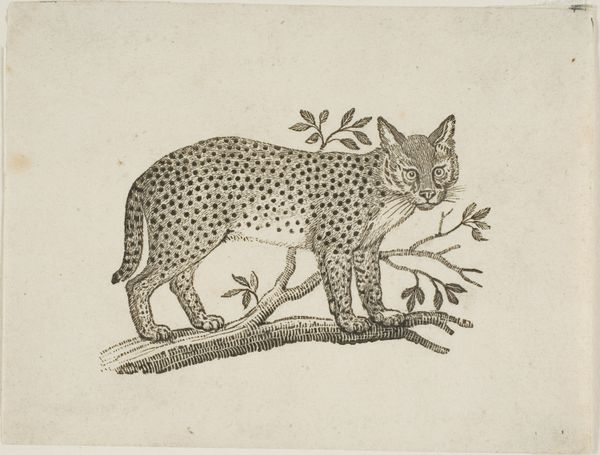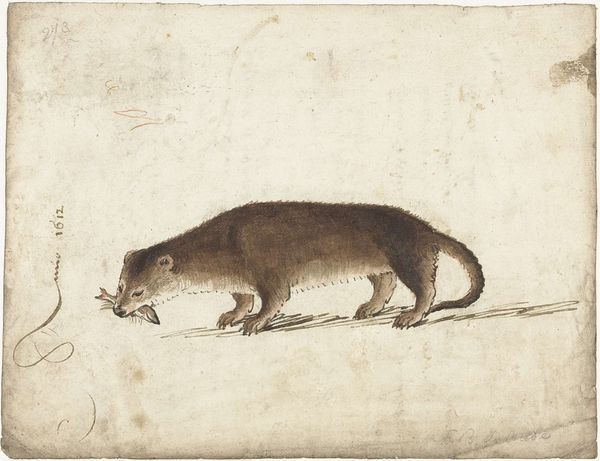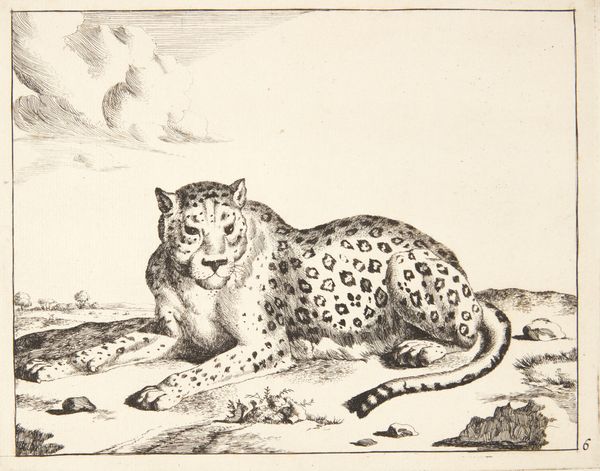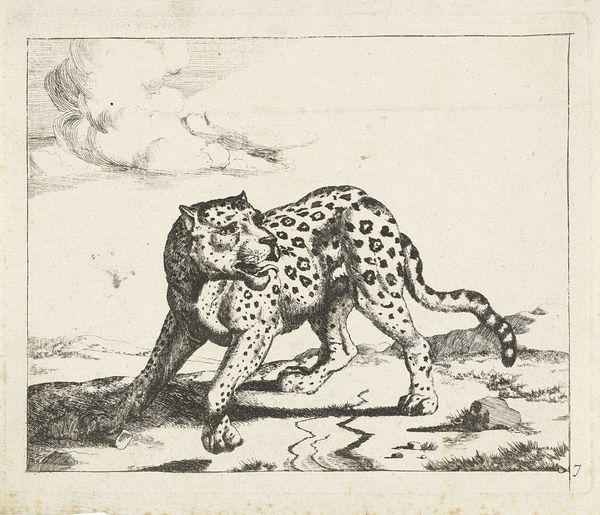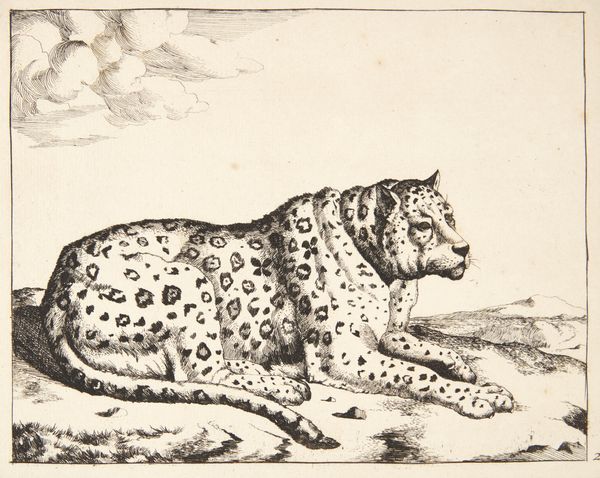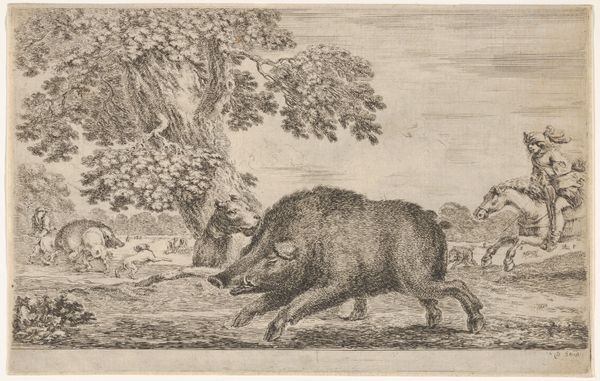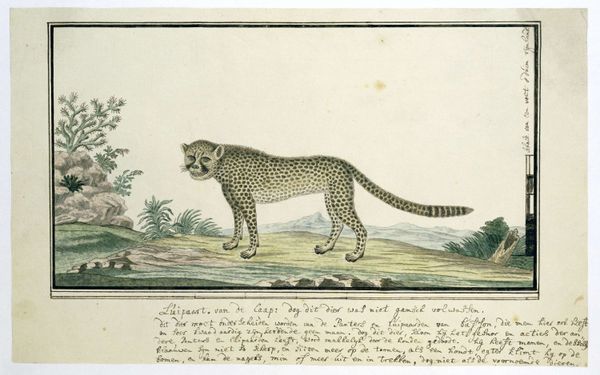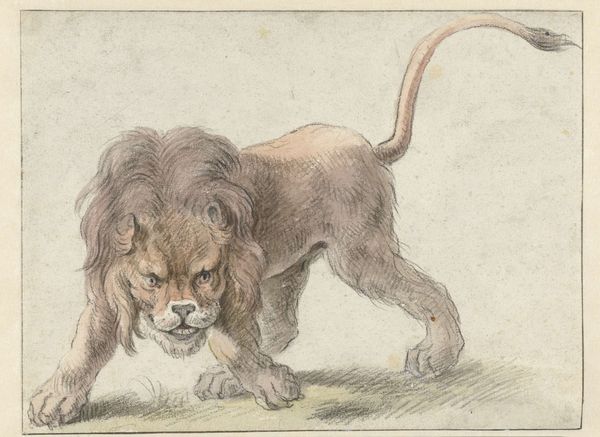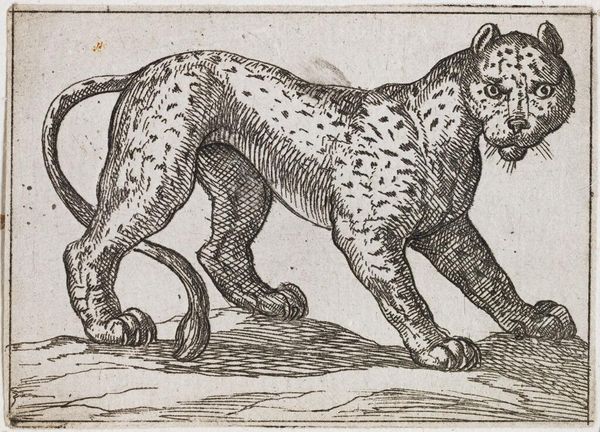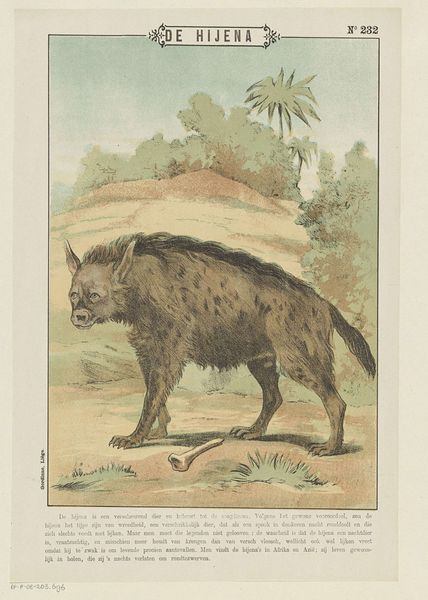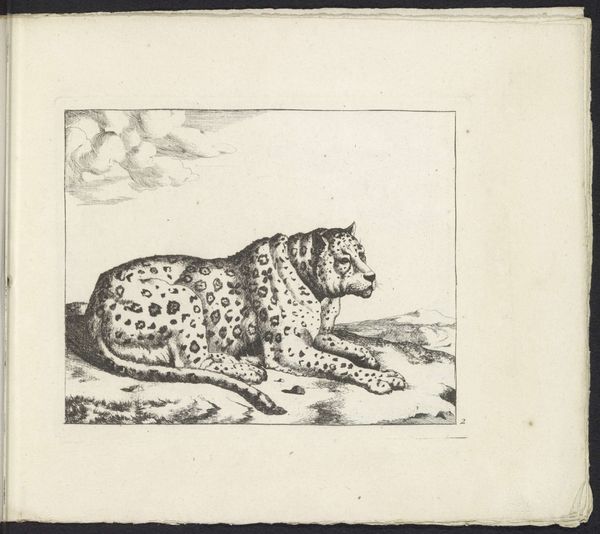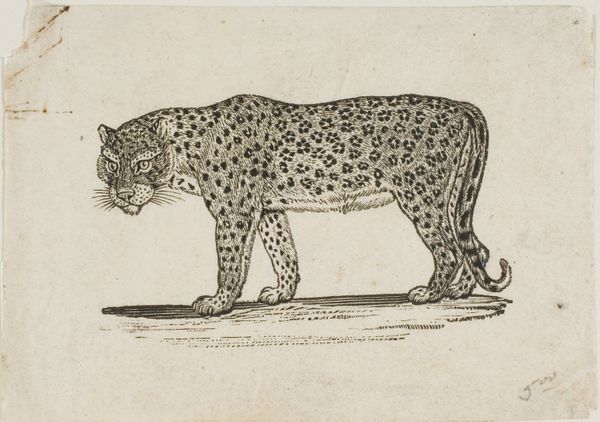
drawing, watercolor
#
drawing
#
aged paper
#
toned paper
#
light pencil work
#
quirky sketch
#
animal
#
pencil sketch
#
figuration
#
personal sketchbook
#
watercolor
#
orientalism
#
sketchbook drawing
#
watercolour illustration
#
sketchbook art
#
watercolor
Dimensions: height 210 mm, width 162 mm
Copyright: Rijks Museum: Open Domain
Curator: This watercolor drawing titled "Japanse Boskat," or Japanese Forest Cat, was created between 1722 and 1784 by Simon Fokke. It resides here in the Rijksmuseum. Editor: Well, my initial reaction is… unsettling. It looks almost like a taxidermied creature attempting to come back to life. The faded colors and the cat's intense stare certainly contribute to this effect. Curator: It is fascinating how Fokke captures the "exotic other," this mysterious creature from a faraway land. The animal’s peculiar physiognomy reminds us of early European encounters with Asian wildlife. The almost human-like face staring out seems burdened, melancholic even. Editor: I'm intrigued by the composition. Notice how the diagonal line created by the rising ground and the placement of the tree guides our eye? The cat stands confidently in the foreground, firmly establishing its presence. However, there's a certain flatness in the rendering, perhaps typical of drawings of this era. Curator: Precisely. And it speaks volumes. In terms of semiotics, the forest cat became an icon for distant, unreachable places, embodying stories whispered by travelers. The animal's likeness in European depictions gradually shifts as the cultural memory evolves, so this watercolor presents a fascinating snapshot in that long transformation. Editor: You are right. Looking closely, I see how the light pencil work defines the shape, especially on its head and body. It seems that the watercolor washes are applied with much precision, and limited hue, yet resulting in an illustration of very interesting texture. Curator: Exactly. Every detail – the fur, the pose, even the imagined landscape – carries a symbolic weight, offering insights into both the animal itself and the European imagination. The drawing becomes a point of convergence. Editor: Well, analyzing it through a formalist lens makes me appreciate Fokke’s artistic choices, even if the initial impression was unnerving. It's the careful balance and construction, the calculated use of form, that ultimately draw us in. Curator: Absolutely. What we observe in its features reflects, inadvertently, our longings, perhaps the anxieties and the fascination with the natural world from centuries past. Editor: Indeed. This brief examination allows us to observe how focusing on construction or symbolic resonance creates very different but also complementary observations.
Comments
No comments
Be the first to comment and join the conversation on the ultimate creative platform.
